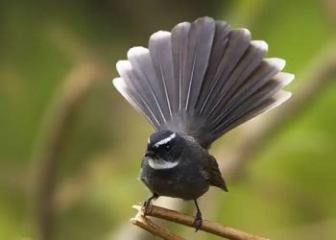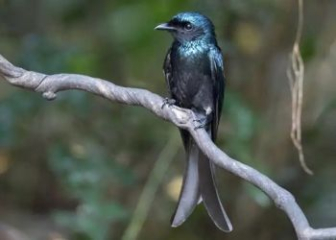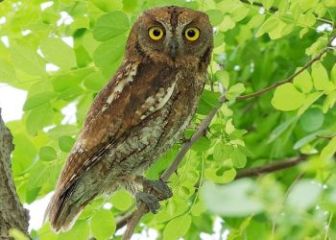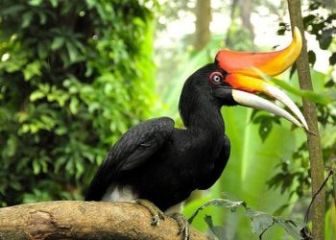Golden Dragon Bird - The number 1 nest maker in the bird world
Blog | by
The Golden-crowned Pied Piper (Ploceus hypoxanthus) is a small bird with bright yellow plumage accented with striking black stripes and is extremely skillful at building nests.
The Golden Dragon Bird (scientific name: Ploceus hypoxanthus) is a wild bird native to Southeast Asia. It stands out with its brilliant yellow feathers and its ability to weave nests in a super skillful and sophisticated way - considered a "great architect" of the bird world. Although this bird is not recommended for keeping as a pet, it still receives attention and interest from many people.
In today's article, let's learn more about the origin, morphological characteristics and interesting habits of the golden dragon nicebirds !
Golden dragon bird information :
|
Common name |
Golden Dragon |
|
Scientific name |
Ploceus hypoxanthus |
|
Set |
Passeriformes - Order Passeriformes |
|
Surname |
Ploceidae - Ploceidae |
|
Spend |
Ploceus |
|
Source |
Southeast Asia |
Origin & distribution of the golden dragon bird

Learn about the origin of the golden dragon bird.
The Asian Golden Weaver, with the scientific name Ploceus hypoxanthus, is a bird species belonging to the Ploceidae family, native to Southeast Asian countries such as Vietnam, Cambodia, Laos, Myanmar, Thailand and Indonesia,...
In the wild, golden-crowned cranes often live in moist grasslands, cultivated areas, swamps, flooded fields, etc. They are sedentary birds, do not migrate and prefer to live near water.
Currently, the Golden Dragon is listed as "Near Threatened - NT" by IUCN due to habitat loss and over-exploitation and hunting for bird release.
Identifying characteristics of the golden dragon bird
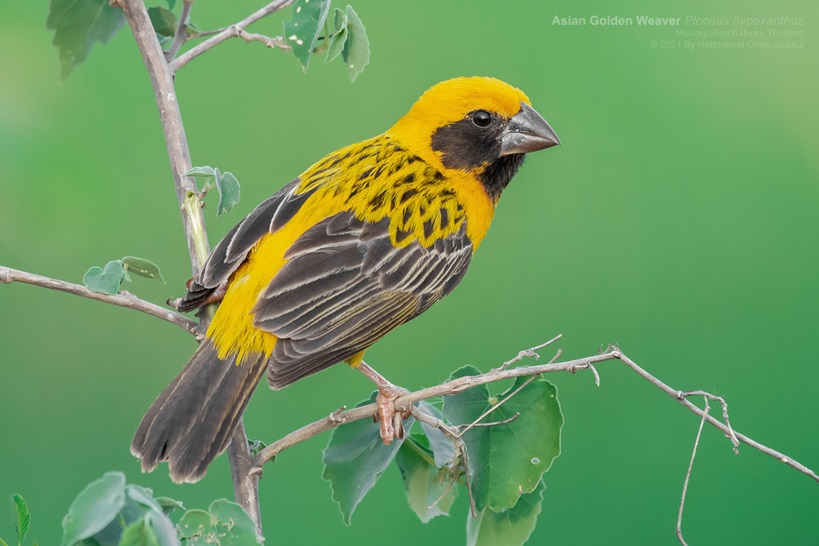
A golden dragon bird with brightly colored feathers.
Let's learn in detail about the morphological characteristics of the golden-crowned dragon bird to help you easily recognize this bird in the wild.
Size :
- Body length: 13 - 15 cm (including tail)
- Wingspan: 18 - 21 cm
- Weight: 20 - 30 grams
- Body: Small, plump, long legs, short tail
Male bird color (breeding season) :
- The head, neck, belly and back are a bright yellow overall.
- There are black triangular patches on both cheeks - chin - throat that look like wearing a black bib.
- The back and wings have alternating fine black stripes that stand out against a bright yellow background, creating a unique contrast.
- The chest, belly and flanks have less black stripes.
- Dark brown eyes
- Black, shiny, large, strong, pointed beak
- Chana is pinkish brown.
Color of female and male birds outside the breeding season :
- Lighter coat color with light yellow, brown or gray
- No black patches on face, chin
- The back still has many black stripes but not as sharp and clear as in the male bird.
Beak - feet - tail :
- Conical beak, large, strong, short
- Long legs, with a structure of 3 front toes - 1 back toe
- Short, fan-shaped tail
Habits & Behavior of the Golden-crowned Dragon Bird
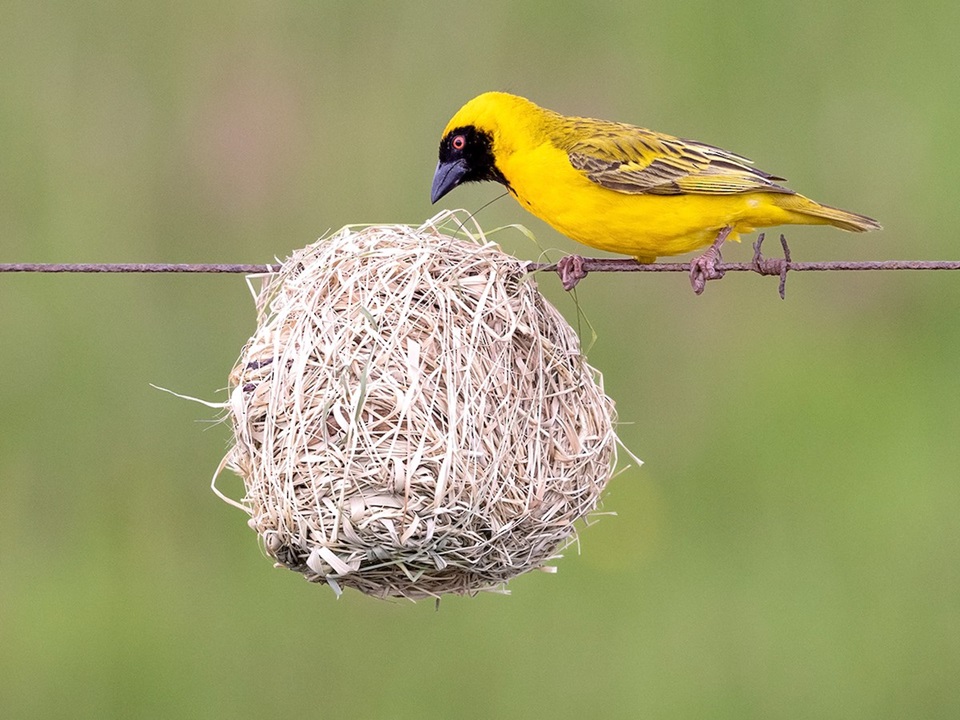
The golden dragon is skillfully building its nest.
The Golden Dragon is known as the top "nest-making artist" in the bird world. Let's learn more about some of the typical habits and behaviors of this bird species below.
Live in the herd
Normally, golden dragons always live in flocks of 10 - 30 individuals flying, moving and foraging together. During the breeding season, they will pair up separately but still choose to nest next to each other to form a "concentrated nesting area". After the breeding season, they will immediately rejoin the flock.
Top nesting ability
One of the outstanding habits and behaviors of the golden dragon is its super-excellent nest-making behavior. The male bird will use dry grass, soft leaves, straw, and plant fibers to weave into extremely sophisticated hanging nests in the shape of gourds and bags.
Nests are often hung on reeds, low trees, etc. Each male bird will weave 2-3 nests to attract and invite female birds.
Omnivorous
Although the golden dragon is an omnivore, it will tend to eat more plants. Their main food is usually cereals, rice, grass seeds,... Occasionally, during the breeding season, they will supplement protein-rich foods such as worms, insects,...
Typically, the golden-crowned dragon will forage on the ground among crops and grass but may also peck seeds from low-lying tree branches.
Voice & communication
The Golden Dragon has a short but continuous call, which is quite pleasant to the ear but not as loud as a starling or a thrush.
Birds often call a lot during the breeding season to both mark their territory and attract the attention of female birds. Between individuals in the flock, they often use the sounds "chik chik" and "cheep chip" to communicate with each other.
Territorial and defensive
Although they live in flocks and nest next to each other, male golden ibises are territorial and will vigorously defend their territory from other males.
When threatened or detecting unusual signs, this bird will call loudly to warn and then fly around to distract the enemy.
Reproductive behavior
Let's learn more about the habits and reproductive behavior of the golden-crowned dragon bird to understand more about this bird species.
- Breeding season usually takes place during the rainy season, the rice-bearing season (April - August depending on the region).
- After choosing the most suitable nest, the female bird will lay 1-2 eggs, and she will only incubate them when all the eggs are gone.
- Eggs need to be incubated for 12 - 15 days before they hatch into chicks.
Should I raise a golden dragon bird as a pet?
Although the golden-crowned arowana is not banned from being kept as pets, they are not very popular in the pet bird industry due to the following reasons:
- Golden dragons are wild birds, often living in flocks, so they are difficult to tame and care for.
- This bird does not have a beautiful voice but only makes a chirping sound that is pleasant to the ear, completely unsuitable for those who want to raise singing birds.
- The Arowana bird finds it difficult to adapt to being kept in a small cage because it is normally very active and mischievous.
- They are listed as “Near Endangered” by the IUCN, so if you catch birds of unknown origin, you may be breaking the law.
Questions and answers about the golden dragon bird?
Where do golden dragons usually live?
Normally, golden dragons mainly live in moist grasslands, swamps, rice fields,....
What do golden dragons eat?
Golden dragons are omnivorous birds but they prefer to eat seeds, fruits, and berries rather than insects, worms, crickets, grasshoppers, etc.
Are golden dragons popular in the pet bird industry?
No, the Golden Dragon is a wild bird, difficult to tame and needs a similar habitat to the wild so they are not recommended to be kept as pets.
Is the golden dragon a rare bird?
Currently, the golden-crowned dragon is on the IUCN's "Near Threatened - NT" list, so this bird is not commonly traded and is relatively rare.
Does the golden dragon bird sing well?
No, the golden dragon does not sing as beautifully as many other birds. They can only make short calls like "chirp chirp", "tik - tik",... which sound chirping and pleasant to the ear.
Beautiful golden dragon bird image
Below are some of the most impressive and beautiful moments of the golden dragon birds flying and existing in nature. Let's admire them right away to see the colorful beauty and agile, lively appearance of this bird species.
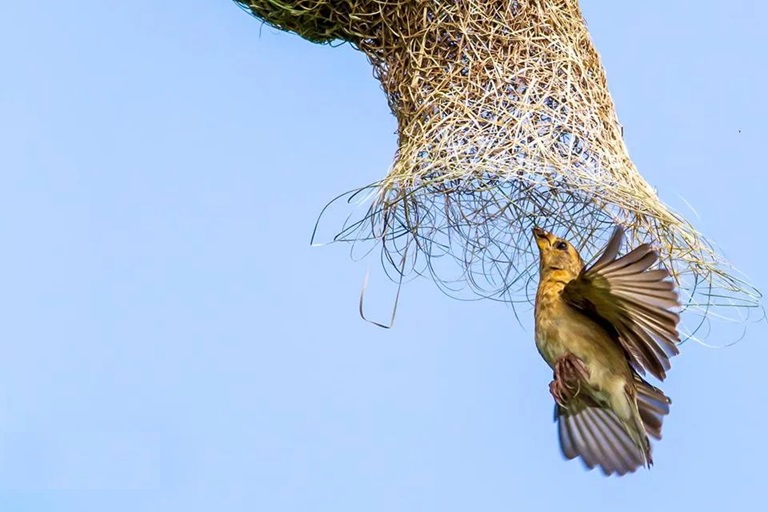
A golden dragon bird is diligently building its nest.
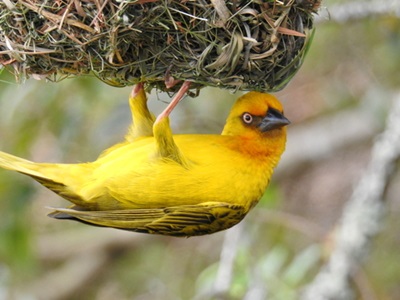
A golden dragon bird is hanging upside down to build a nest.
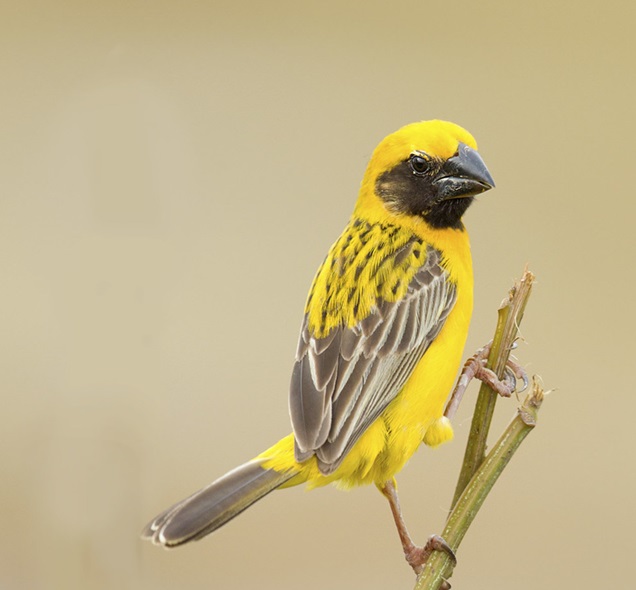
The image of a small but extremely prominent golden dragon bird.
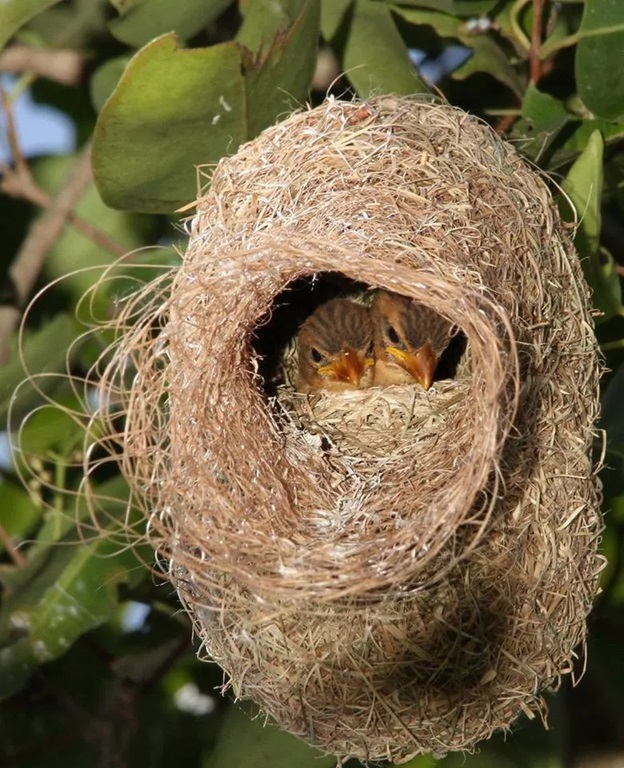
The extremely elaborate and beautiful nest of the golden dragon bird.
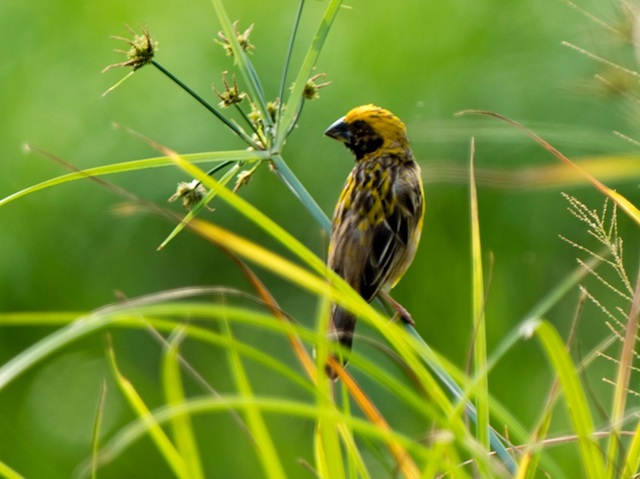
A golden dragon bird is perched on a branch of grass.
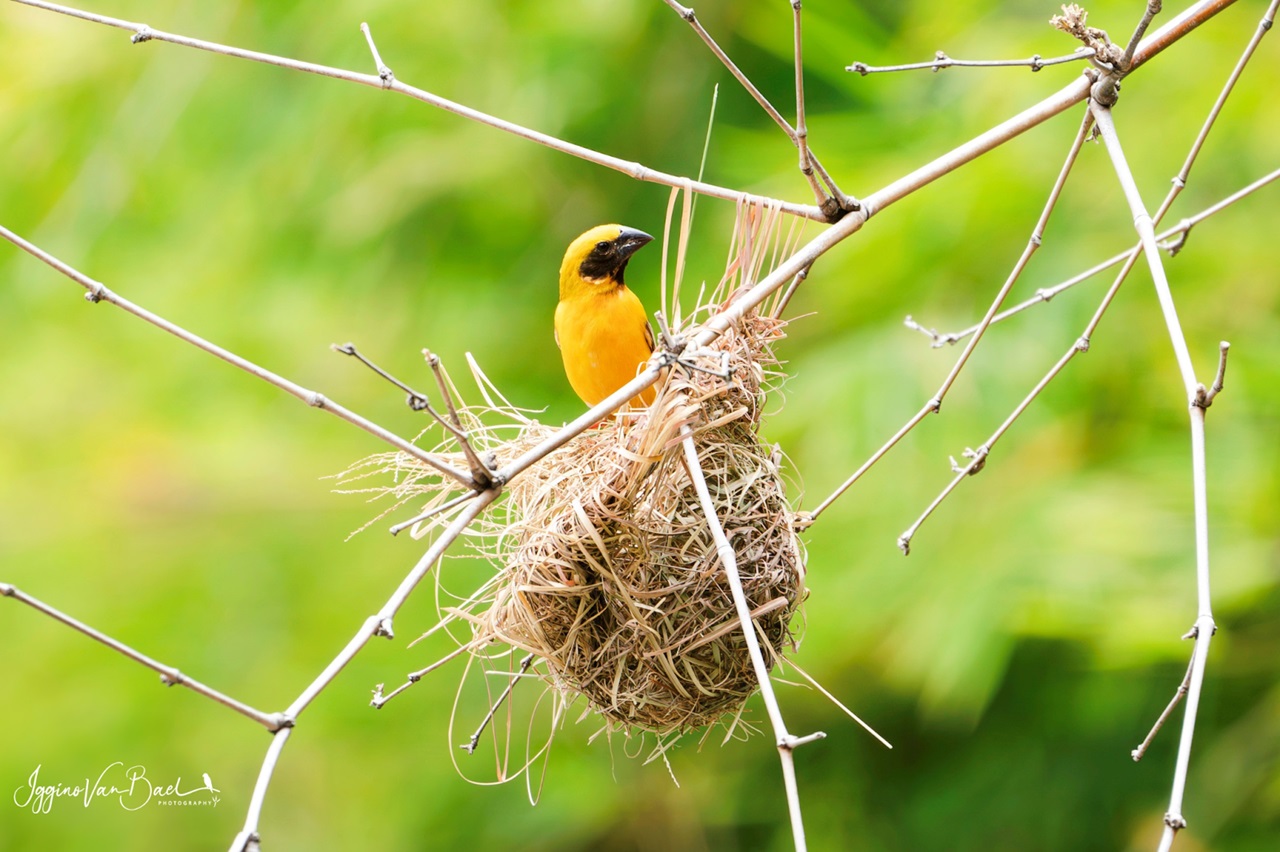
A golden dragon bird is sitting on its nest.
With its brilliant beauty and elaborate nesting habits, the Golden-crowned Dragon Bird has contributed to diversifying the ecosystem of Southeast Asia in general and Vietnam in particular. Understanding the habits, origins and behavior of this bird will help you appreciate and protect them from serious decline.
Goodbye and see you soon in the next articles of the Blog section of nicebirds.net to explore together the vast and rich world of birds.
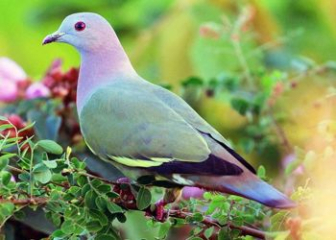
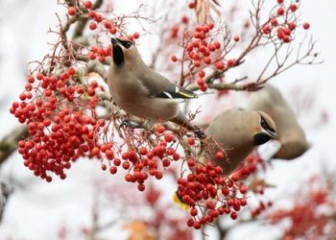
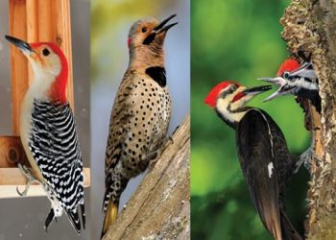

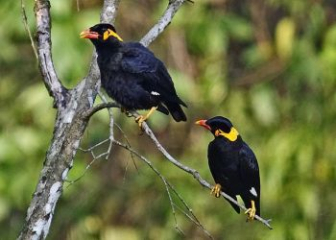
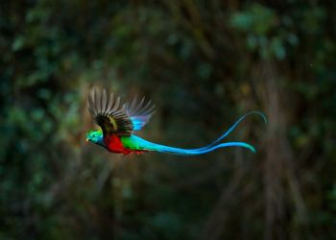
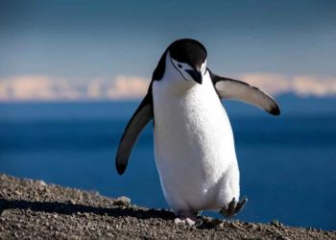
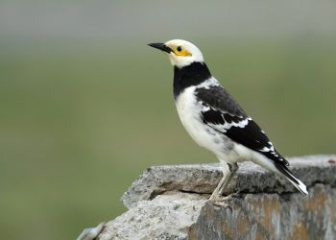
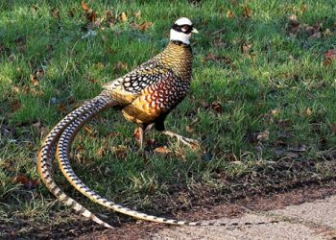
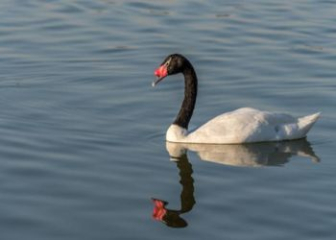
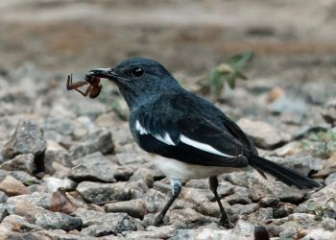
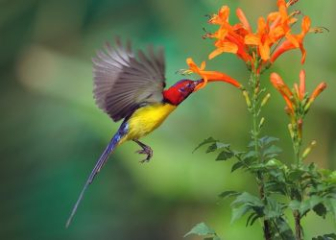
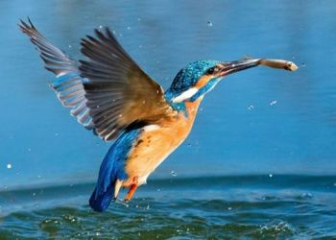
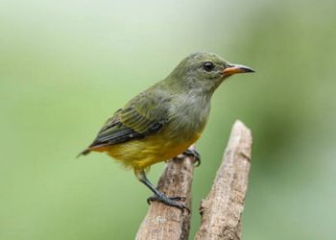
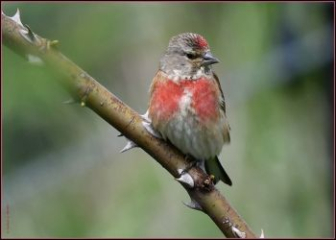
_350x250.jpg)
